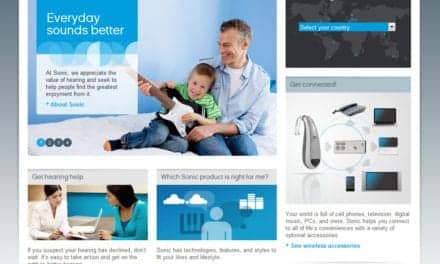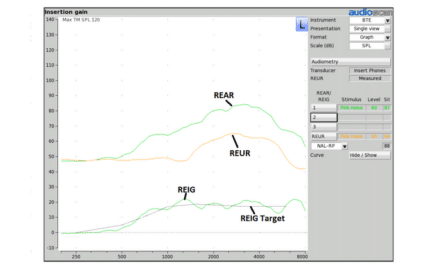It’s that time of the year again! Although trying to pick a favorite article is a little like being asked to name your favorite child, I’ve listed what I think were The Hearing Review‘s top-20 “must-read” features in 2019. Stay tuned for next week when we highlight the best columns and news stories of 2019.
Evidence that Hearing Aids Could Slow Cognitive Decline in Later Life (Jan 2019 HR). By Piers Dawes, PhD; Asri Maharani, MD, PhD; James Nazroo, MD, PhD; Gindo Tampubolon, PhD, and Neil Pendleton, MD, PhD, on behalf of the Sense-Cog WP1 group. One of the primary researchers in the EU’s SENSE-Cog Project explains how his team found a reduction in the rate of cognitive decline following hearing aid use.
Exploring Community Health Worker (CHW) Models for Delivering Audiology Services (Jan 2019 HR). By Sara K. Mamo, AuD, PhD; Meredith R. Frank, AuD, and Peggy Korczak, PhD. Results of this study reveal key areas of concern and opportunities regarding use of trained laypersons to increase outreach in audiology.
AERPs Reflect Complexity of Word Recognition (Feb 2019 HR). By James Jerger, PhD, and Jeffrey Martin, PhD. Dr Jerger explains why the dispenser/researcher in search of a quantifiable index of “listening effort” need look no further than the PN component of the AERP.
Depression, Hearing Loss, and Treatment with Hearing Aids (March 2019 HR online) . By Victor Bray, PhD. A terrific comprehensive overview of the scientific literature pertaining to hearing loss, loneliness, and depression—as well as speculation about what these findings imply for hearing healthcare.
Dichotic Listening in Elderly, Hearing-Impaired Persons: An Exercise in Pattern Recognition (March 2019 HR). By James Jerger, PhD. A patient’s audiogram rarely tells the whole story. This article shows how the Dichotic Sentence Identification (DSI) Test can help differentiate between simple SNHL and hearing losses involving cognitive decline or APD in older adults.
The Impact of Unilateral Hearing Loss on Adult Life (April 2019 HR). By James Galloway, MSc; Vicky Zhang, PhD; Vivienne Marnane; Sanna Hou, MClinAud; Greg Stewart, and Fabrice Bardy, PhD. Individual perspectives on how UHL affects their daily lives, attitudes, and relationships authored by a team of NAL scientists in Australia.
Untreated Disabling Hearing Loss Costs Billions – in the US and the Rest of the World (April 2019 HR). By Kim Ruberg. Hear-it estimates that disabling hearing loss (≥35 dB HL) costs €216 billion per year in Europe and $133 billion each year—or $9,100 per person with an untreated disabling hearing loss.
Ten Highlights from the History of Audiology (May 2019 HR). By James Jerger, PhD. Dr Jerger highlights 10 key events in our field’s rich history, ranging from C.C. Bunch’s early audiometric work to the establishment of the first AuD training program.
Benefit of Using Telecare for Dementia Patients with Hearing Loss and Their Caregivers (June 2019 HR). By Lindsay Jorgensen, PhD, Taylor VanGerpen, Thomas A. Powers, PhD, and Dirk Apel. Although this is a Tech Topic article on the proprietary Signia TeleCare system, it’s an excellent example of how eAudiology is revolutionizing our field.
Lyric After 10 Years: New Data and Perspectives from a Private Practice (June 2019 HR). By Mark Sanford, AuD, and Lizz Jensen. Another Tech Topic, this one focusing on Lyric, a unique, extended wear, subscription-base hearing aid. One of the world’s foremost clinics provides their perspectives on its evolution and its potential to change hearing healthcare.
Hearing Loss as a Social Problem: A Study of Hearing-impaired Spouses and Their Partners (July 2019 HR). By Tine Tjørnhøj-Thomsen, PhD, and Hans Henrik Philipsen, PhD. One of the best articles I’ve seen on the frictions and frustrations caused by hearing loss in marriages and conjugal relationships. It should be required reading for patients.
The Quest for Audiometric Zero (July 2019 HR). By James Jerger, PhD. What zero on an audiometer dial and how was it standardized? Here is a rollicking history of how “0 dB” on the audiometer was ultimately established and standardized.
MarkeTrak 10: Hearing Aids in an Era of Disruption and DTC/OTC Devices (August 2019 HR). By Thomas A. Powers, PhD, and Carole M. Rogin. The industry’s longest-running survey of consumers with hearing loss looks at consumers’ perceptions about hearing aids, PSAPs, and the potential of OTC and DIY hearing care.
Service-Delivery Considerations of Direct-to-Consumer Devices in the New Age of Rehabilitative Hearing Healthcare (September 2019 HR). By Rupa Balachandran, PhD, and Amyn M. Amlani, PhD. A great primer on assessing and setting service fees for dealing with DTC and OTC hearing aids.
Effects of Probe Tubes Inserted Through Earmold Vents on Real-Ear Probe Microphone Measurements (Sept 2019 HR). By Stephen W. Painton, PhD, and Taylor Sweeney. Although most have used this REM method at one time or another, is inserting the probe tube through an earmold vent really okay to do? This study suggests it is.
Special Report: Veterans with Hearing Loss: Unique Needs and Audiological Considerations (Sept 2019 HR online). By Karl Strom. An overview on the special hearing needs of this important patient group, including care for tinnitus, traumatic brain injury and concussion, and compliance issues.
How to Use the Repeat-Recall Test (RRT) to Increase Hearing Aid Satisfaction. By Francis Kuk, PhD, Petri Korhonen, MSc, and Christopher Slugocki, PhD. The RRT is a new integrated speech test that provides a platform for individualized fine-tuning that could help promote greater patient satisfaction with hearing aids.
Contralateral Routing of Signal: A Status Report 2019 (October 2019 HR). By Douglas L. Beck, AuD, and Virginia Ramachandran, AuD, PhD. A review of the various forms of unilateral loss and appropriate treatment methods, with particular emphasis on CROS and BiCROS hearing aid fittings.
Competing in the New Era of Hearing Healthcare, Part 2: Differentiating a Practice with Comorbidity Screening, Monitoring, and Diagnostics (Nov 2019 HR). By Robert M. Traynor, EdD, MBA, and James W. Hall, III, PhD. A discussion about using close and regular monitoring of your patients’ status, and an up-to-date, evidence-based approach to diagnostic assessment.
Challenges of Instant-Fit Ear Tips: What Happens at the Eardrum? (Dec 2019 HR) By Laura Winther Balling, PhD; Niels Søgaard Jensen, MSc; Sueli Caporali, PhD; Jens Cubick, PhD, and Wendy Switalski, MBA, AuD. How do all those different kinds of ear tips affect the acoustics of receiver-in-the-canal (RIC) hearing aids? Here’s a great study that provides insights into this question.





Keep up the good work! You know, many people are looking around for this information online, you could help them greatly.